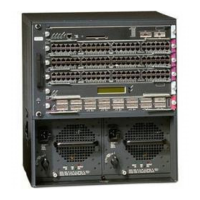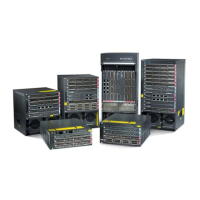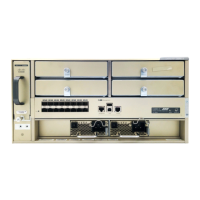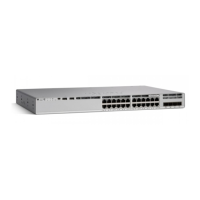8-13
Catalyst 6500 Series Content Switching Module Configuration Note
OL-4612-01
Chapter 8 Configuring Additional Features and Options
Configuring Network Management
Router(config-slb-sfarm)# real 5.5.5.6
Router(config-slb-real)# inservice
Router(config-slb-real)# exit
Router(config-slb-sfarm)# exit
Router(config-module-csm)# vserver WEB
Router(config-slb-vserver)# virtual 30.30.30.30 tcp www
Router(config-slb-vserver)# serverfarm WEBFARM
Router(config-slb-vserver)# inservice
Configuring Network Management
This section describes how to manage the CSM on the network and contains these sections.
• Configuring SNMP Traps for Real Servers, page 8-13
• Configuring the XML Interface, page 8-13
Configuring SNMP Traps for Real Servers
When enabled, an SNMP trap is sent to an external management device each time a real server changes
its state (for example, each time a server is taken in or out of service). The trap contains an object
identifier (OID) that identifies it as a real-server trap.
Note The real server trap OID is 1.3.6.1.4.1.9.9.161.2
The trap also contains a message describing the reason for the server state change.
Use the snmp-server enable traps slb ft command to either enable or disable fault-tolerant traps
associated with the SLB function of the Catalyst 6500 switch. A fault-tolerant trap deals with the fault
tolerance aspects of SLB. For example, when fault-tolerant traps are enabled and the SLB device detects
a failure in its fault-tolerant peer, it sends an SNMP trap as it transitions from standby to active.
To configure SNMP traps for real servers, perform this task:
Configuring the XML Interface
In previous releases, the only method available for configuration of the CSM was the IOS command line
interface. With XML, you can configure the CSM using a Document Type Definition or DTD. Refer to
Appendix C, “CSM XML Document Type Definition” for a sample of an XML DTD.
Command Purpose
Step 1
Router (config)# snmp-server
community public
Defines a password-like community string sent with the
notification operation. The example string is public.
Step 2
Router (config)# snmp-server
host host-addr
Defines the IP address of an external network management device
to which traps are sent.
Step 3
Router (config)# snmp-server
enable traps slb csrp
Enables SNMP traps for real servers
1
.
1. The no form of this command disables the SNMP fault-tolerant traps feature.

